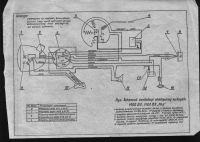Hello! I have a diode bridge unitry https://gmoto.pl/produkty/58185/mostek-diodowy_1.jpg
I have no idea how to connect it as to what, because in the diagram I have a different diode bridge than this.
scheme:
https://images83.fotosik.pl/718/1619a128402add23gen.jpg
I have no idea how to connect it as to what, because in the diagram I have a different diode bridge than this.
scheme:
https://images83.fotosik.pl/718/1619a128402add23gen.jpg




